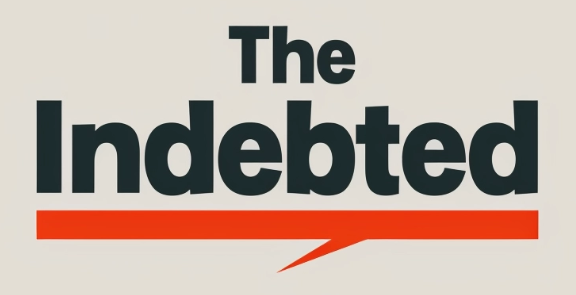Debt can be a significant burden on anyone’s life. It can cause stress, anxiety, and even depression. However, living a debt-free life can have a significant impact on your quality of life. Achieving financial freedom requires a significant lifestyle adjustment, but it’s worth it in the end.
Living debt-free means that you don’t owe anyone anything, and you’re not beholden to anyone. It gives you a sense of peace, freedom, and opportunity that you may not have experienced before. You can focus on your life goals and pursue your passions without the constant worry of debt hanging over your head. In this article, I will share some tips on how to adjust your lifestyle for long-term success and achieve debt-free living.
Understanding Debt and Its Impact
Debt can be a tricky subject to navigate, and it’s important to understand its impact on our lives. In this section, I’ll cover some key points to help you understand debt and its impact.
Good Debt vs. Bad Debt
Not all debt is created equal. Good debt is debt that is used to purchase assets that appreciate in value and generate income, such as a mortgage or a business loan. Bad debt, on the other hand, is debt that is used to purchase assets that depreciate in value and do not generate income, such as credit card debt or a car loan.
While good debt can be a useful tool for building wealth, bad debt can quickly become a burden. High levels of bad debt can negatively impact your credit score and debt-to-income ratio, making it more difficult to obtain loans or credit in the future.
The Psychological Burden of Debt
Debt can also have a significant impact on our mental health and well-being. High levels of debt can lead to stress and anxiety, which can in turn lead to physical health problems such as headaches and insomnia.
It’s important to take steps to manage and reduce your debt to avoid these negative impacts. Creating a budget and sticking to it, focusing on high-interest debts first, and negotiating with creditors for lower interest rates or repayment plans are all effective strategies for reducing debt.
Overall, understanding debt and its impact is an important first step towards achieving debt-free living. By taking control of your finances and making smart decisions, you can reduce your debt and improve your financial well-being.
Creating a Personalized Financial Plan
As I mentioned earlier, living debt-free requires a certain level of planning and discipline. Creating a personalized financial plan is the first step towards achieving that goal. In this section, I will discuss two important aspects of creating a financial plan: assessing your financial situation and setting realistic financial goals.
Assessing Your Financial Situation
Before you can create a financial plan, it’s important to take stock of your current financial situation. This includes assessing your income, expenses, and net worth. To do this accurately, you’ll need to gather all your financial statements, including bank statements, credit card statements, and investment account statements.
Once you have all your financial statements, you can start by calculating your net worth. This is done by subtracting your total liabilities (debts) from your total assets. Knowing your net worth can help you understand your current financial situation and identify areas where you need to make changes.
Next, you’ll need to assess your income and expenses. This involves creating a budget that lists all your monthly income and expenses. You can use a spreadsheet, budgeting app, or pen and paper to create your budget. Be sure to include all your expenses, including fixed expenses like rent or mortgage payments, utilities, and car payments, as well as variable expenses like groceries, entertainment, and dining out.
Setting Realistic Financial Goals
Once you have a clear understanding of your financial situation, you can start setting realistic financial goals. Your goals should be specific, measurable, achievable, relevant, and time-bound (SMART). For example, instead of setting a goal to “pay off all my debt,” set a goal to “pay off my credit card debt within the next 12 months.”
When setting your financial goals, be sure to prioritize them based on their importance. For example, if you have high-interest debt, like credit card debt, it’s important to prioritize paying that off before focusing on other goals like saving for a down payment on a house.
In conclusion, creating a personalized financial plan is crucial to achieving long-term success in debt-free living. By assessing your financial situation and setting realistic financial goals, you can create a plan that works for you and helps you achieve your financial goals.
Effective Debt Reduction Strategies
As someone who has successfully paid off my own debt and helped others do the same, I can confidently say that there are two main methods for reducing debt that work well: the Debt Snowball Method and the Debt Avalanche Method.
The Debt Snowball Method
The Debt Snowball Method involves paying off your debts in order of smallest to largest balance, regardless of the interest rates. This method is effective because it helps build momentum and motivation as you see your smaller debts disappear quickly. To use this method, you’ll want to:
- List out all of your debts from smallest to largest balance.
- Make minimum payments on all debts except for the smallest one.
- Put any extra money you have towards paying off the smallest debt.
- Once the smallest debt is paid off, move on to the next smallest debt and repeat the process.
The Debt Avalanche Method
The Debt Avalanche Method involves paying off your debts in order of highest to lowest interest rate, regardless of the balance. This method is effective because it saves you the most money on interest in the long run. To use this method, you’ll want to:
- List out all of your debts from highest to lowest interest rate.
- Make minimum payments on all debts except for the one with the highest interest rate.
- Put any extra money you have towards paying off the debt with the highest interest rate.
- Once the debt with the highest interest rate is paid off, move on to the next highest interest rate debt and repeat the process.
Both methods have their pros and cons, so it’s important to choose the one that works best for your situation. Additionally, it’s important to note that these methods work best when you are also practicing good financial habits, such as creating a budget, avoiding new debt, and finding ways to increase your income.
If you have a lot of debt, you may also want to consider debt consolidation, which involves combining all of your debts into one loan with a lower interest rate. This can make your monthly payments more manageable and help you pay off your debt faster.
No matter which method you choose, the key is to stay committed and consistent in your debt reduction efforts. With time and effort, you can become debt-free and achieve long-term financial success.
Budgeting for a Debt-Free Lifestyle
As someone who wants to live a debt-free lifestyle, creating and sticking to a budget is crucial. A budget is a financial plan that helps you allocate your money to different expenses, savings, and investments. Here are some tips to help you create a budget that works for you.
Creating a Budget That Works
The first step in creating a budget is to track your expenses. This will help you identify where your money is going and where you can cut back. You can use a spreadsheet or a budgeting app to track your expenses. Once you have a clear picture of your expenses, you can create a budget that allocates your money to different categories such as housing, transportation, food, and entertainment.
When creating a budget, it’s important to be realistic. Don’t allocate too much money to one category and leave yourself short in another. Be honest with yourself about your spending habits and adjust your budget accordingly. It’s also important to leave some room for unexpected expenses such as car repairs or medical bills.
Cutting Expenses and Increasing Savings
Once you have created a budget, the next step is to cut expenses and increase savings. One way to cut expenses is to reduce discretionary spending. This includes things like eating out, shopping, and entertainment. You can also reduce your housing expenses by downsizing or finding a cheaper place to live.
Another way to increase savings is to create sinking funds. Sinking funds are separate accounts that you use to save for specific expenses such as car repairs, vacations, or Christmas gifts. By setting aside money for these expenses, you can avoid going into debt when they arise.
Finally, it’s important to have an emergency fund. An emergency fund is a separate account that you use to save for unexpected expenses such as job loss or medical bills. Aim to save at least three to six months’ worth of living expenses in your emergency fund.
In conclusion, creating and sticking to a budget is key to living a debt-free lifestyle. By tracking your expenses, cutting back on discretionary spending, and increasing savings, you can achieve long-term financial success.
Maintaining Financial Discipline
As I continue to work towards my goal of debt-free living, I have learned that maintaining financial discipline is crucial for long-term success. In this section, I will share some tips that have helped me stay on track, avoid common financial pitfalls, and build and preserve wealth.
Avoiding Common Financial Pitfalls
One of the biggest challenges I face in maintaining financial discipline is avoiding impulse purchases. To overcome this challenge, I have developed a habit of creating a budget and sticking to it. I track my income and expenses meticulously to understand my financial habits and identify areas where I can cut back on unnecessary expenses.
Another common financial pitfall is investing in risky or untested investment strategies. While investing can be a great way to build wealth, it is important to do your research and choose investments that align with your financial goals and risk tolerance. I always consult with a financial advisor before making any investment decisions.
Building and Preserving Wealth
Building and preserving wealth is another important aspect of maintaining financial discipline. One strategy that has worked well for me is to focus on financial stability rather than short-term gains. I prioritize building an emergency fund and paying off debt before making any major investments.
Another key strategy for building wealth is to invest in assets that appreciate in value over time, such as real estate or stocks. However, it is important to balance risk and reward and avoid investing more than you can afford to lose.
In summary, maintaining financial discipline is crucial for achieving debt-free living and long-term financial success. By avoiding common financial pitfalls, building and preserving wealth, and prioritizing financial stability, I am confident that I can achieve my financial goals and live a financially independent life.





